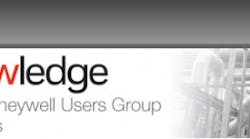Processing plants deserve maximum productivity, improved reliability, optimized supply and solid safety and security. “The cost of sensors has gone down. The role of analytics and machine learning is becoming more important. How do you take advantage of these technologies?” asked Shree Dandekar, vice president and general manager, Honeywell Connected Plant. “We’ve laid the foundation with advanced software solutions.”
As a former IT guy, Dandekar knows what keeps process plant personnel awake at night. He addressed those issues during his presentation this week at the Honeywell Users Group 2017 conference in San Antonio, Texas. “Honeywell Connected Plant is all about connected processes, assets and people,” he explained.
“Connected processes is about how you bring in your plant data,” Dandekar continued. ”You bring in all of the process domain knowledge to create a digital twin in the cloud. We’re using all of the industry knowledge we have gained over the past 100 years. If you look at a mid-sized refinery, there’s an average loss of 5% production because of unplanned downtime and process issues. Improving process reliability for the plant can result in $25-30 million of savings annually.”
[sidebar id =1]
Connected assets include equipment such as turbomachinery, compressors and pumps. “What if you could improve the overall efficiency of the equipment running in your plant?” asked Dandekar. “A 0.5% improvement equals $10-15 million in savings, realized through predictive maintenance and improved asset utilization.” Honeywell already has worked with its solution partners, companies such as SKF and Flowserve, to create pilot programs and improve asset utilization at customer sites.
“Connected people—that’s all about how you make the operators, plant managers and CIOs more proficient,” explained Dandekar. “It includes cloud-enabled operators and prescriptive analytic tools for maintaining competency and process knowledge.” The UniSim Competency operator training simulation suite is deployed in eight of the top 10 refineries, said Dandekar, and they’re realizing a 20% improvement in operational efficiency.
An extension of connected people is Honeywell’s Connected Worker, designed to improve safety, productivity and compliance. “Connected Worker is for the worker out in the field,” explained Prabhu Soundarrajan, leader of Connected Worker, Honeywell Safety & Productivity Solutions. “One of the benefits is safety. It reduces incidents by 40% through notification. Fewer incidents and fewer fines can mean millions of dollars in savings. Another benefit is worker productivity, with error rates reduced by 40% through less transcription and reduced paperwork. It also ensures workers are assigned and using proper personal protective equipment, protecting workers better when incidents occur. And this means lower compliance costs.”
Solving the problems you know
Leveraging contextual data is key to cloud analytics and to creating the digital twin. “We’ve been collecting data for years,” added Jason Urso, chief technology officer, Honeywell Process Solutions. “We can do a lot more than just regulatory control. We’ve been taking that data and helping you to improve safety, throughput yield and reliability.”
Safety enhancements start at the operator interface. “You should have no more than nine standing alarms on an operator console,” said Urso. “Plants with out-of-control alarms have out-of-control processes. DynAMo alarm suite can help to manage that.”
Benchmarking indicates 70% of reliability issues are operations-related, said Urso. “This isn’t so surprising when you think about advanced process control (APC),” he said. “When you’re operating your control better, you’re eliminating a significant amount of variability. Through the power of our software and data analytics, we can push your process for better throughput.”
Another area for improvement is efficiency. “By making more data available and by unlocking the value of your data, we can help you to anticipate opportunities,” explained Urso. “Challenges include multiple inconsistent data sources, heavy dependence on spreadsheets and a lack of methods to share data. Our approach is different. We’re not providing a do-it-yourself toolkit where you figure out outcomes. And we’re not just throwing data scientists at the problem. We’ll help you to solve a problem that you know you have, a real-world problem.”
To accomplish this in the cloud, Honeywell collects data from customer sites and brings it to the cloud environment, to its Uniformance Connected Historian, and then uses analytics against that data. “It’s extremely secure and flexible,” explained Urso. “This gives you the scalability you need and does so in a secure manner. We have a set of software applications that can deliver real outcomes today. Significant benefits are available by leveraging data analytics.”
A lot of those benefits come from the digital twin in the cloud, and Honeywell’s UniSim Design Suite enables that threefold. “There are three types of digital twins in UniSim,” explained Urso. “The experience-based model is a detailed first-principle model for the entire plant or complex. The second model is empirical. The APC model is generated from plant data and control models. And the third is the equipment-based models, which are first-principle and data-driven predictive models.”
The digital twin can investigate and trend performance between the actual and the expected. “The management dashboard gives a broad view, supports management and enables routine meetings,” said Urso. “It’s a high-level view of performance that can vary in scope, and it can integrate with unit and equipment diagnostic systems. The digital twin can use some of our high-fidelity kinetic models. This is augmented by data from our immense experience. We have this massive knowledge base that we’re starting to build into our digital-twin model.”





